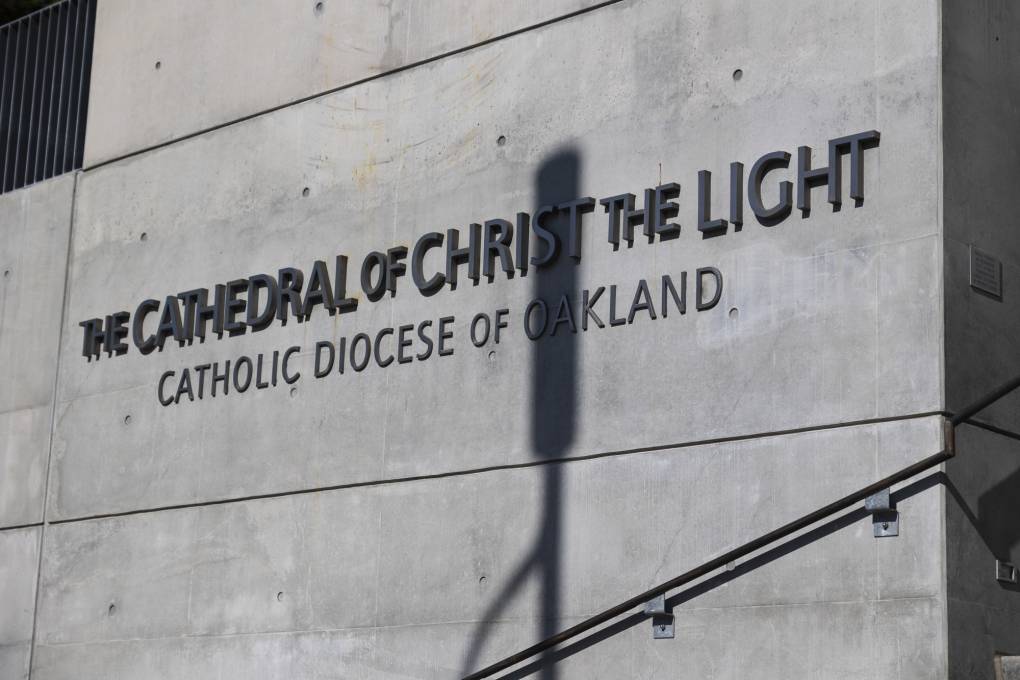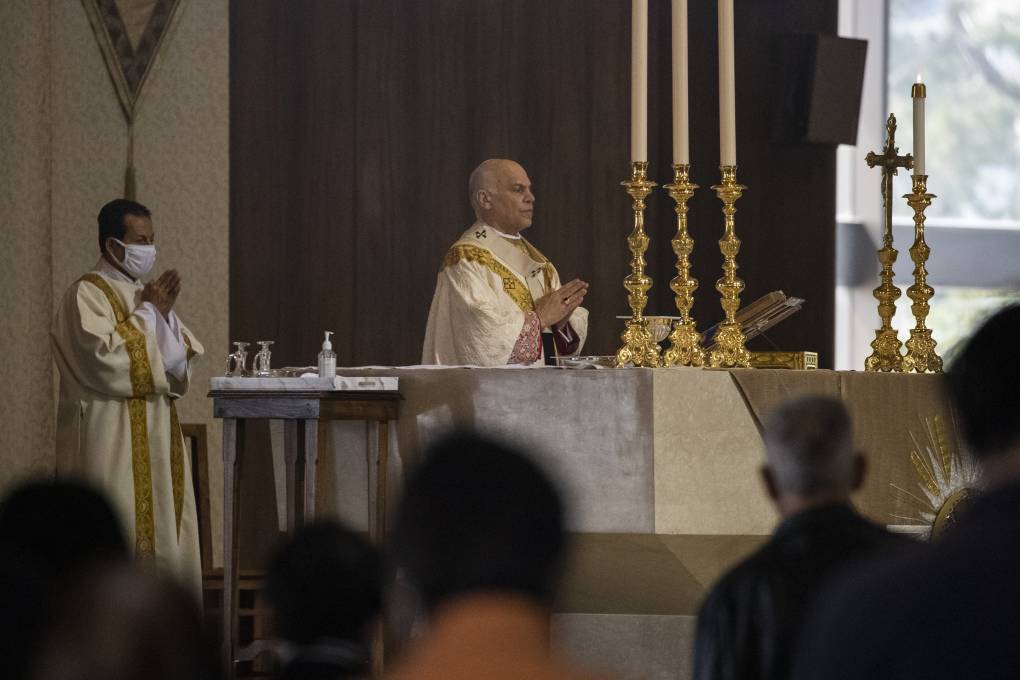
By Alex Hall
A San Mateo priest accused of molestation in a lawsuit is one of two accused clergy who remain in active ministry with the Archdiocese of San Francisco as the church faces renewed questions over how it responds to sexual abuse allegations.
The lawsuit, filed in Alameda County in November 2022, alleges Father Linh Tien Nguyen sexually abused a former altar boy and student of St. Pius Catholic Church and School in Redwood City between approximately 2005 and 2008.
The plaintiff in the case, identified as “M.S.,” alleges he was between 10 and 13 years old. He is now in his late 20s.
“This young person has got a lot of courage,” said Dan McNevin, Oakland leader of the Survivors Network of those Abused by Priests, or SNAP. “If there’s any good news in this, it’s that this survivor had the courage at a very young age to come forward and has probably expedited the healing of a lot more kids.”
Official Catholic Church records show Nguyen worked as a pastor at St. Pius from 2005 through 2009. He is currently an associate pastor at St. Bartholomew Parish in San Mateo.
Nguyen and other staff members of St. Bartholomew did not respond to KQED’s requests for comment on the allegation.
A second priest, Father David Ghiorso, faces multiple allegations of sexual abuse of young boys at St. Vincent’s School for Boys in San Rafael and a Sonoma County summer camp in the 1980s and ’90s, according to court records and a source familiar with one of the cases.
The details of the accusations are laid out in documents from two lawsuits filed in Alameda County — one in 2020 and another in 2022. Today, Ghiorso is the pastor of St. Charles Parish in San Carlos and St. Matthias Church in Redwood City.
The allegations in the lawsuits have not been proven. The plaintiffs either declined or did not respond to interview requests.
“I can tell you that the Archdiocese followed its procedures in the instances you raised and that Fr. Ghiorso and Fr. Nguyen are priests in good standing and have faculties to minister in the Archdiocese,” Peter Marlow, the Archdiocese of San Francisco’s executive director of communications and media relations, told KQED in an email.
The Archdiocese also denies the allegations in legal filings.
News of the allegation against Nguyen comes as the Archdiocese is pressed for details in bankruptcy proceedings about how it handles sexual abuse allegations, and which priests it has deemed credibly accused.
On Nov. 8, the Official Committee of Unsecured Creditors, which represents survivors, requested the court’s authorization to subpoena the Archdiocese for documents on the church’s finances and allegations of abuse dating back multiple decades. The Archdiocese objected, calling the request “excessively overbroad, vague and harassing.” A hearing is scheduled for Nov. 30.
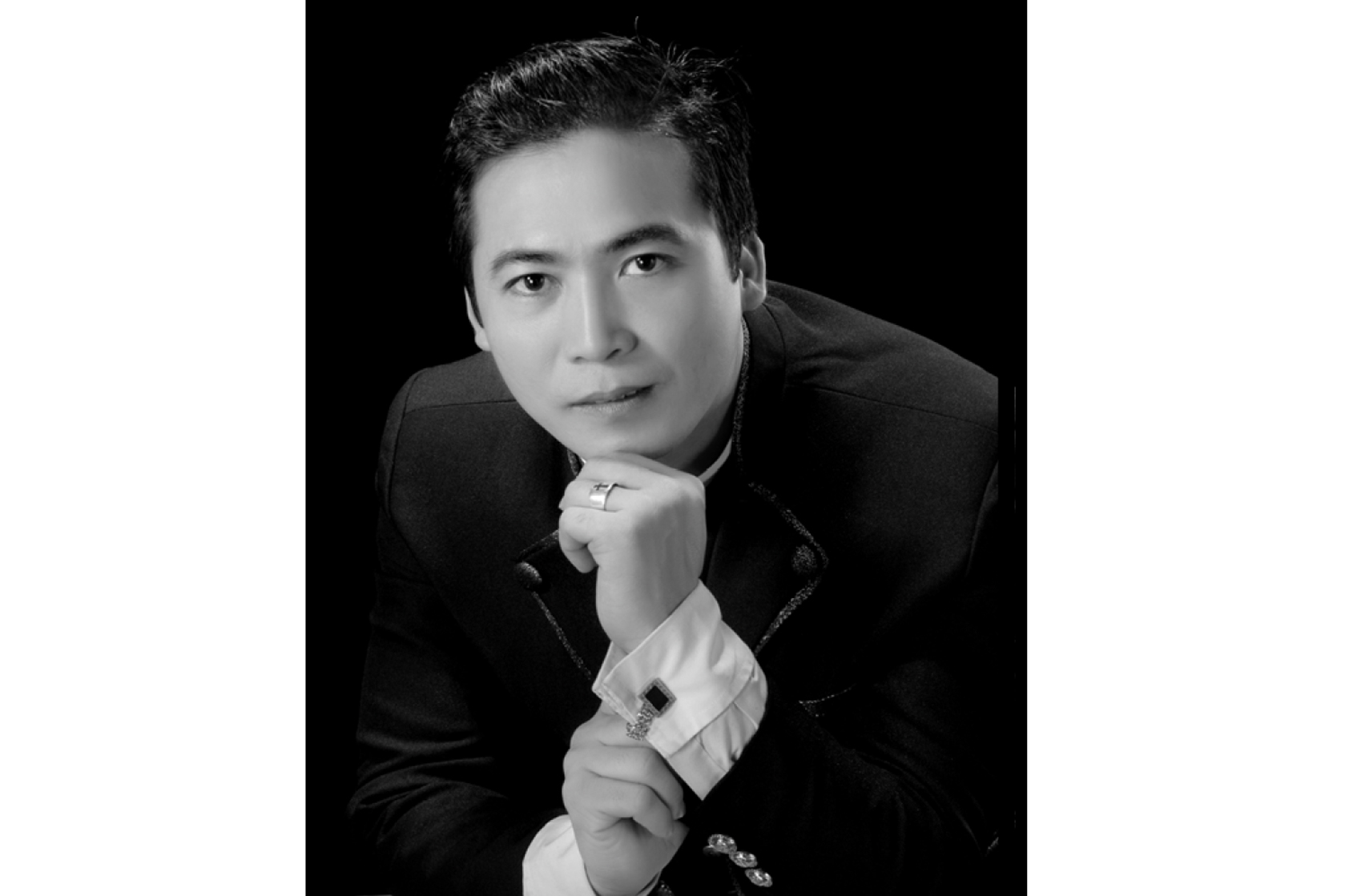
The Archdiocese sought Chapter 11 protection in federal bankruptcy court in August as it faced more than 530 lawsuits filed by individuals alleging sexual abuse by clergy or others associated with the Archdiocese under a 2019 state law, Assembly Bill 218, or the California Child Victims Act. The law waived all time limits for abuse claims from 2020 through the end of last year, and it permanently extended age limits to sue for childhood molestation — from age 26 to 40 years old or within five years after the discovery of the abuse.
The bankruptcy proceedings effectively froze all the state court cases filed against the San Francisco Archdiocese, its institutions and clergy.
In recent back-to-back legal calls in the bankruptcy case, representatives of the Archdiocese answered questions under oath from the Office of the U.S. Trustee and the committee about the church’s financial situation and knowledge of abuse allegations. Officials said the church had found no accusations against clergy to be credible in the past decade, but has become aware of multiple allegations in that time.
In a Sept. 28 meeting of creditors, the Archdiocese’s Vicar General, Father Patrick Summerhays, disclosed that two active priests and two retired priests had been accused of abuse. Each has been exonerated by the church’s internal process, according to the Archdiocese.
“I have not yet received a credible allegation against a priest, although I have received allegations,” Archbishop Salvatore Cordileone said two weeks later in a continuation of the hearing, referring to his 11 years as Archbishop.
When asked how many cases the Archdiocese has received in that time, Cordileone said there have been seven or eight accusations the church has had to investigate.
The Archdiocese’s process for responding to an allegation of sexual abuse of a minor involves reporting the allegation to civil authorities and removing the accused priest from active ministry while an investigation is conducted by a qualified investigator. A report on the findings of that investigation are handed over to the Archdiocese’s Independent Review Board, a panel of lay people who issues a recommendation to the Archbishop as to whether the allegation is ‘sustained’ or ‘not sustained,’ according to the Archdiocese’s website and church representatives.
“I’ve heard different theories as to what credibly accused means,” Cordileone said. “I try not to use that term and rather use [the] term ‘sustained’ or ‘not sustained.’”
What standard the Independent Review Board, or IRB, uses to determine if an allegation is sustained is unclear, James Stang, an attorney for the Unsecured Creditors’ Committee, later told KQED in a phone interview.
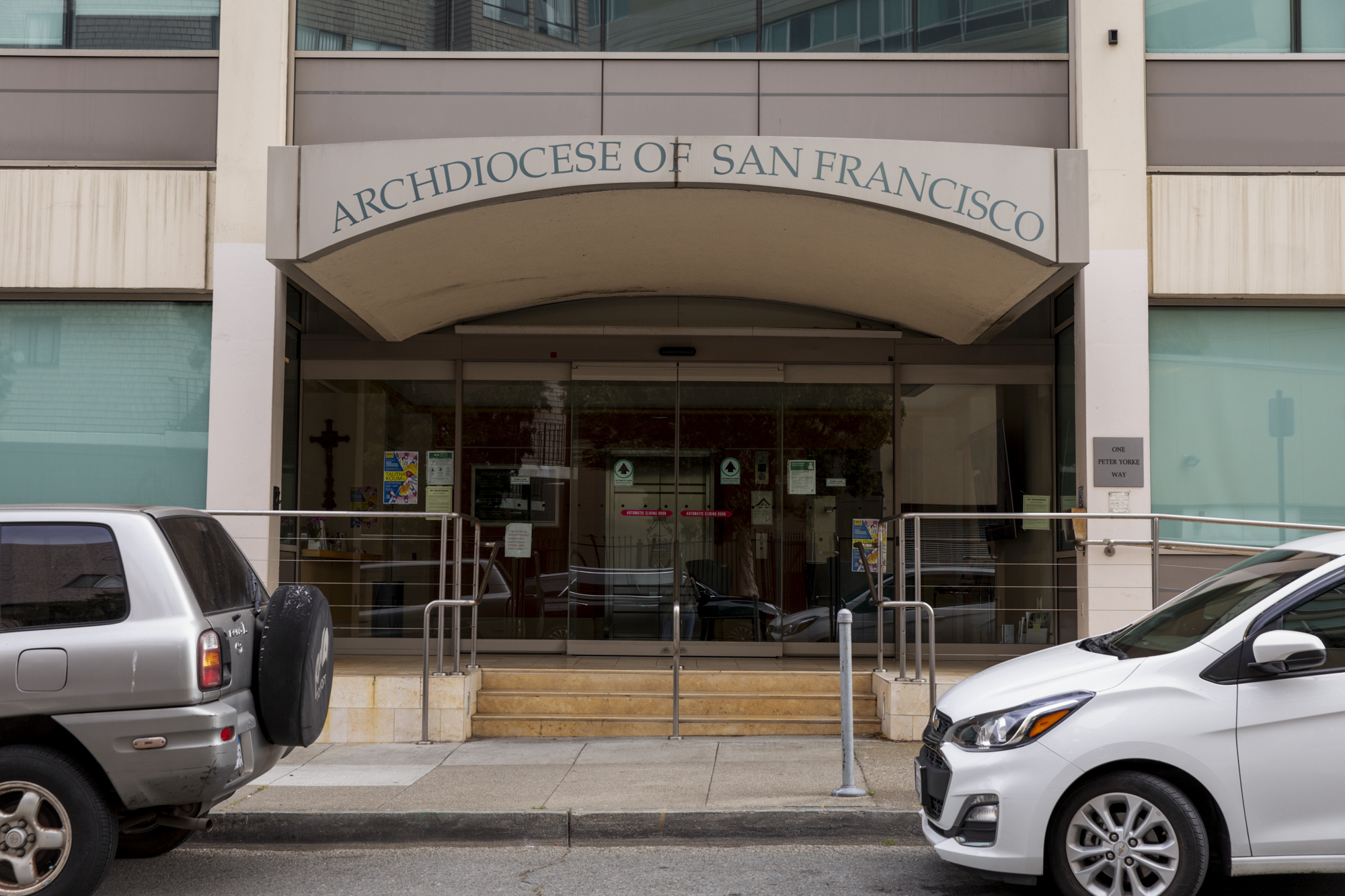
“I can’t find anything that defines it in what the public can see on the website,” Stang said. “In other words, if I go to the website, and they discuss the review board process, I don’t see a definition of what constitutes a sustained claim.”
He continued: “I think the public should know what it means to have a sustained accusation. There has to be a definition somewhere. It can’t just be a gut check. There must be some standard that these review board people are using.”
While there isn’t a single, uniform definition of what constitutes a “credible accusation” against a priest that is shared across all Catholic dioceses, many have publicly shared their interpretations alongside published lists of credibly accused priests in their jurisdiction.
The Archdiocese of San Francisco is the only diocese in California that, to date, has not published such a list. Instead, the Archdiocese maintains a public list of priests and deacons in good standing who are approved for ministry in the Archdiocese.
In its Nov. 8 filing, the creditors’ committee asked for records related to abuse claims dating back to as early as 1941. Among them: personnel files of accused priests, communication between the Archdiocese and law enforcement agencies over the years, and documents explaining the church’s interpretation of “credibly accused.” It also requests documents from the paper trail of the church’s evaluation of sexual abuse allegations, including IRB meeting minutes, interview notes and recommendations.
When asked what standard of proof the IRB uses to determine if an allegation is “sustained” or not, Marlow said, “The process is for the Independent Review Board to review a claim and the investigator’s report and any other relevant information that can support a recommendation.”
When pressed for more details, he declined to clarify that aspect of the process further. In a subsequent email, Marlow elaborated on what happens when the IRB determines that an allegation is sustained. If the IRB finds that there is sufficient evidence to warrant a canonical trial and the trial results in a conviction, then the accused priest would be permanently removed from ministry. If the IRB finds that an accusation is not sustained, then the priest is reinstated to active ministry and damage to his reputation is remediated.
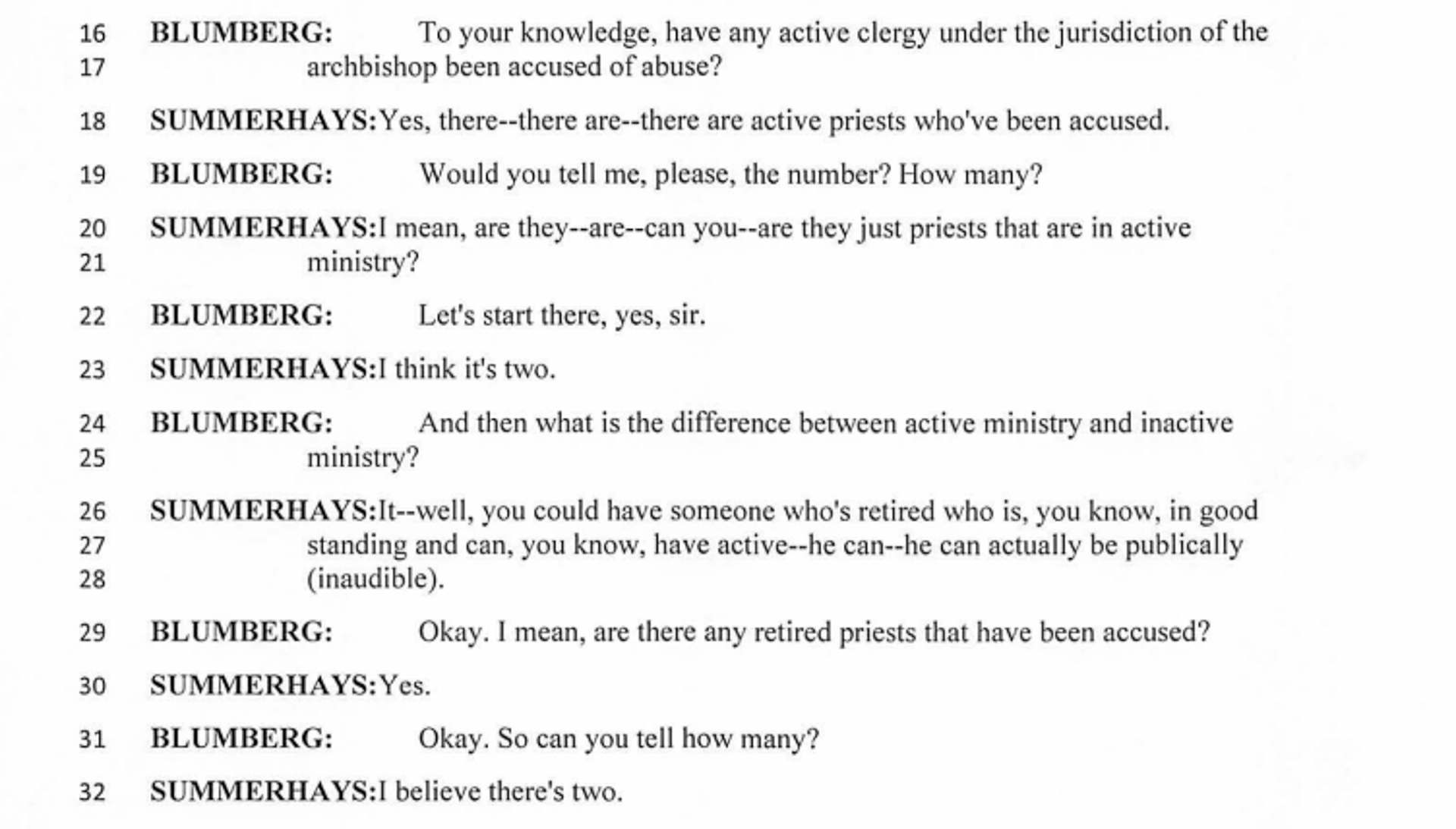
The IRB was established in 2002, the same year that the United States Conference of Catholic Bishops established the Charter for the Protection of Children and Young People, a set of procedures for addressing allegations of sexual abuse of minors by clergy often referred to as the Dallas Charter.
“Review boards were strangled in the crib before they could do something,” said Jim Jenkins, a retired East Bay psychologist who was the IRB’s first chairman at its inception.
Jenkins resigned in 2004 over concerns about the board’s integrity and ability to investigate independently. During his time on the panel, it was the Archbishop who decided what to do with an allegation, not the IRB, Jenkins told KQED.
“When they say the review board reviewed this and did not find anything sustained, that may be true,” Jenkins said. “But the fact that father so and so is recommended to be suspended — that is completely up to the Archbishop. They would never allow anyone else to make that decision. Certainly not lay people.”
Jenkins acknowledged that nearly 20 years have passed since he served on the board, which may have different processes today.
Attorneys for the Archdiocese stated that Cordileone has always followed the IRB’s guidance. Three IRB members contacted by KQED did not respond to interview requests.

Nguyen was placed on administrative leave in October 2022 and returned to ministry two months later, according to the Archdiocese. Ghiorso went on leave for around two months in late 2021.
Marlow declined to say what information the Archdiocese found in its investigations that resulted in Nguyen and Ghiorso both returning to ministry.
“While IRB investigations and recommendations are not shared with the media, I can tell you that the Archdiocese followed its procedures in the instances you raised and that Fr. Ghiorso and Fr. Nguyen are priests in good standing and have faculties to minister in the Archdiocese,” Marlow told KQED in an email.
Spencer Lucas, the attorney representing the complainant identified as M.S. in the lawsuit accusing Nguyen, expressed skepticism about the church’s processes.
“We do know that the Catholic Church, on a very broad scale, has done an inadequate investigation into many, many of these claims,” he said. “We should all be concerned that the church has not taken adequate steps to properly investigate claims and to institute appropriate training to raise awareness about this ongoing problem.”
‘We have our own list’
Survivors and advocates have been calling on the Archdiocese of San Francisco to release a list of priests who have been credibly accused under its watch for years.
In the Oct. 12 meeting of creditors, Cordileone disclosed that while the list hasn’t been released to the public, it does exist.
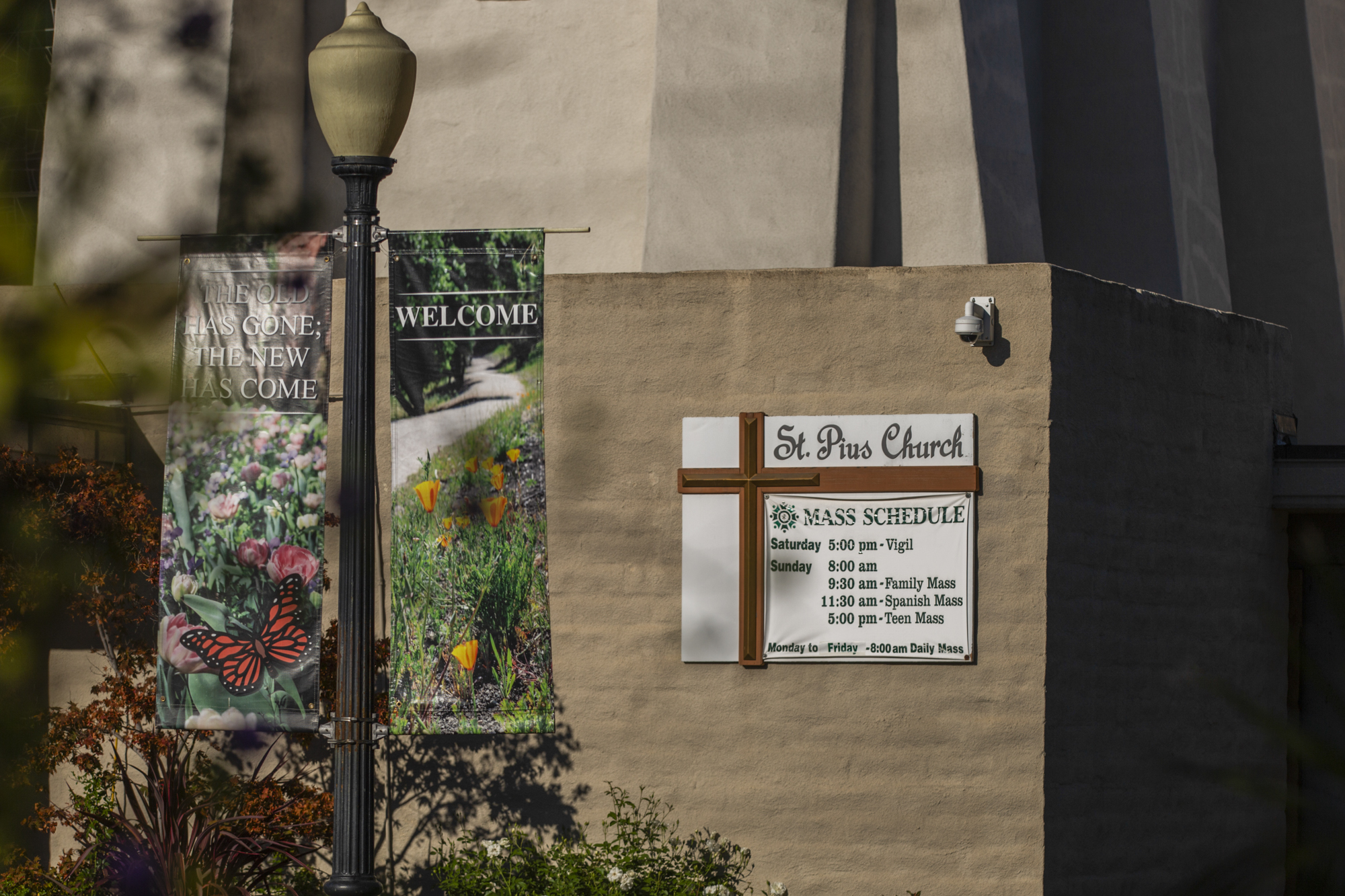
“Does the Archdiocese have a list of clergy where the [Independent] Review Board has made a determination that the accusation is sustained?” Stang asked the Archbishop.
“We know which ones those are, yeah,” Cordinelone replied. “We have our own list.”
Asked why the Archdiocese has not published the list, Cordileone said that no one has given him a reason for doing so.
“The most important thing is that our young people are being protected and that those who abuse are kept out of ministry for doing that,” he added.
Jennifer Stein, an attorney with Jeff Anderson & Associates, which represents over 400 alleged survivors with claims in Northern California, the majority of whom are in the Bay Area, was listening.
“This is an ongoing and recurring theme that is self-serving to the Archdiocese,” Stein said. “It puts children and the public in great peril by keeping that information secret.”
In September 2022, SNAP published its own list of 312 priests who have been publicly accused of abuse and were associated at one point or another with the Archdiocese of San Francisco. Nguyen’s name is not included on the list as the M.S. lawsuit was filed two months after publication. Ghiorso’s name, however, is.
In October 2021, parishioners of both churches where Ghiorso currently works were notified via a letter that he had been named in filed claims and would be temporarily restricted from exercising public ministry while an investigation was conducted.
The announcement came nearly a year after a lawsuit was filed in Alameda Superior Court by two men alleging they had been sexually abused while they were living at St. Vincent’s School for Boys, a residential program for disadvantaged boys in San Rafael.
In court records from the lawsuit, plaintiff Gary Johnson alleges that he and other boys from St. Vincent’s were molested by priests at a summer camp in Sonoma County for several years in the early 1980s.
The lawsuit alleges several priests began showing up at St. Vincent’s weekly to take the boys off-campus to Camp Armstrong, where they were given alcohol and molested or forced to engage in sex acts with one another, according to court records.
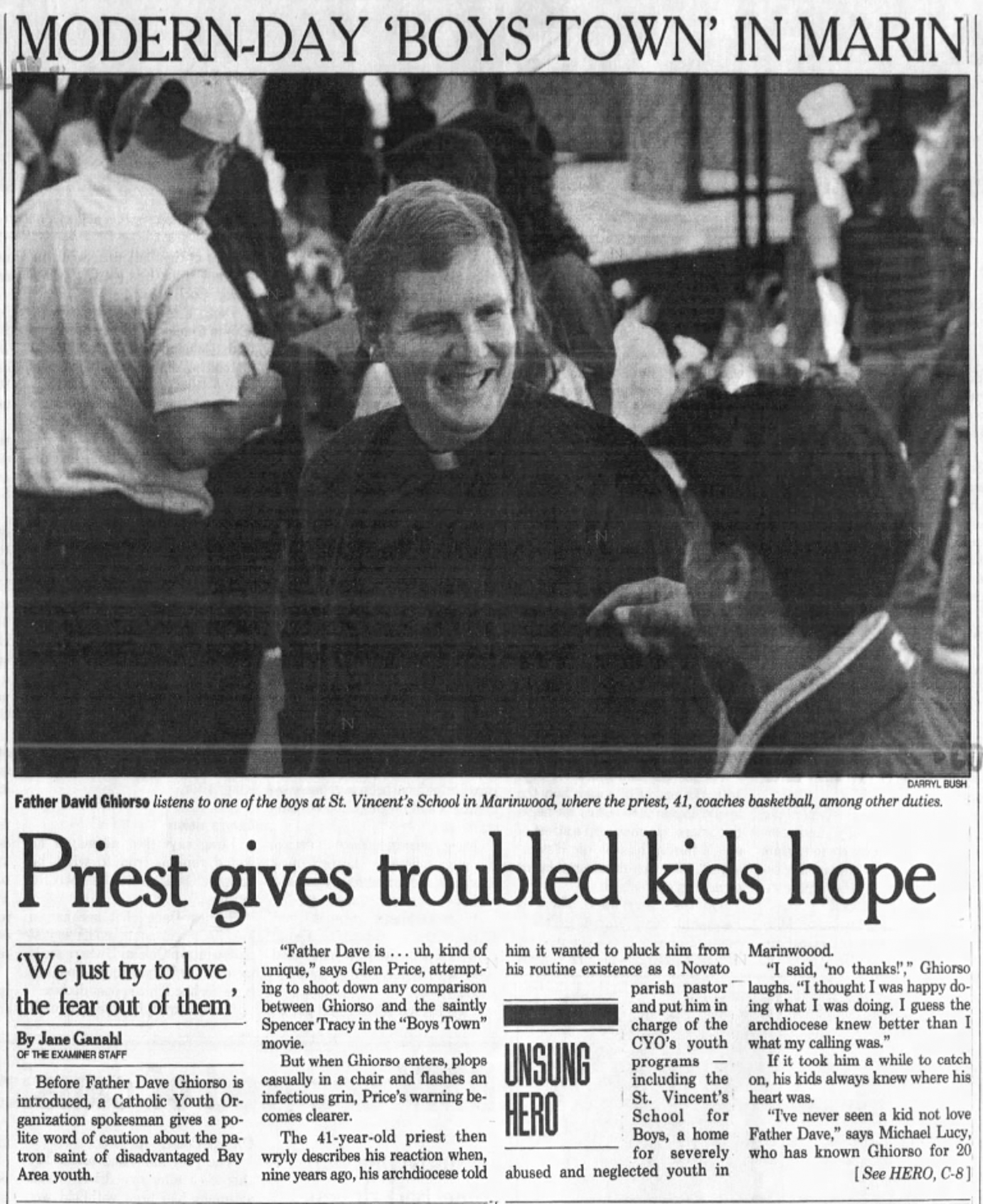
“When not participating, perpetrator defendants would also watch the boys abuse one another and would masturbate as they watched,” the complaint reads.
After reporting the abuse to an athletic coach at the school, who notified the school’s front office, Johnson was removed from St. Vincent’s and placed in a foster home, according to the complaint.
A second plaintiff in the same lawsuit alleges a priest abused him for a year, shortly after he arrived at St. Vincent’s in 1989 at the age of 9 and became an altar boy. Marcus Raymond Hill alleges that on one occasion, when he and other boys were invited to the rectory for doughnuts after mass, he was asked to stay longer, given wine and forced to masturbate the priest.
On three other occasions, the complaint states the priest allegedly plied Hill with wine and anally penetrated and raped him.
Ghiorso, who is not named in the lawsuit, is identified as the alleged perpetrator in the case on a matrix filed in Alameda Superior Court. The matrix is a chart that displays data from hundreds of Northern California clergy sex abuse cases filed under AB 218, including case numbers, attorney names, alleged perpetrator names, dates of alleged abuse and other information.
A person familiar with the case confirmed to KQED that Ghiorso is an alleged perpetrator in the lawsuit. NBC Bay Area previously reported the allegations.
Ghiorso was ordained in 1981 and worked as a pastor at Our Lady of Loretto Church in Novato through 1985, according to the Official Catholic Directory. From 1986-1990, he was the associate director of St. Vincent’s. Ghiorso went on to fill leadership roles with the Catholic Youth Organization and CYO Archbishop McGucken Youth Retreat and Conference Center, the location of Camp Armstrong, records show.
Ghiorso returned to the ministry in December 2021 following his temporary leave, according to Marlow. Four months later, court records show, he was accused in a new lawsuit of ongoing abuse of another altar boy at St. Vincent’s.
From around 1988 through 1991, an unnamed plaintiff alleges, he was “continuously anally raped and sexually assaulted” by Ghiorso when he was 10-13 years old. The plaintiff alleges Ghiorso began sexually abusing him in an area of the church that altar boys used to change. The abuse escalated to mutual oral sex and penetration in the church and at Ghiorso’s office, according to court records.
Several times, the plaintiff attempted to run away from St. Vincent’s and was heavily medicated by staff at the facility in an attempt to control his behavioral outbursts, the complaint reads.
The plaintiff first reported the alleged abuse to a private investigator hired by the Archdiocese, who contacted him in late 2021, according to the complaint. The investigator had “been previously told by one of the plaintiff’s classmates that the plaintiff may have been one of Father Ghiorso’s many victims,” the document reads.
“It was not until the plaintiff was contacted by the investigator that his memories of what Father Ghiorso did to him as a child resurfaced,” according to the document.
Ghiorso and his attorney did not respond to KQED’s multiple requests for comment.
When asked if Ghiorso was removed from ministry a second time pending an investigation into the new claim, Marlow declined to specify and instead restated that the Archdiocese’s procedures were followed in each case.
“There are good reasons why Fr. Ghiorso is a priest in good standing with faculties to serve in the Archdiocese of San Francisco,” he said.
Complete Article ↪HERE↩!
‘Excuse me, Your Eminence, she has not finished speaking’
— Francis’ opening to women in church management is promising. Getting women into the sacristy is trickier.
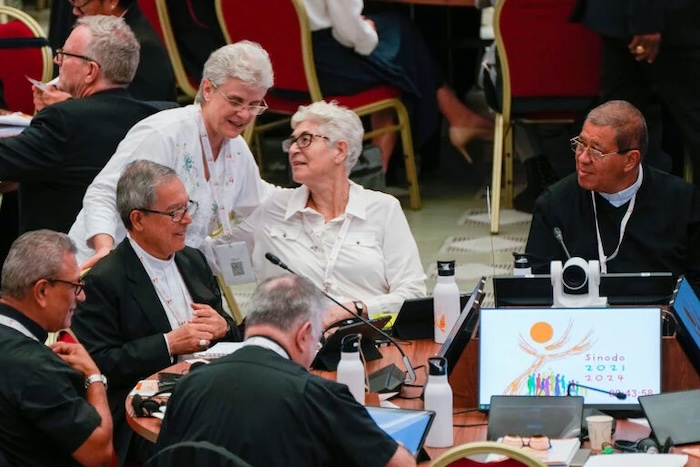
Without doubt, the best line to emanate from the Synod on Synoldality is “Excuse me, Your Eminence, she has not finished speaking.”
That sums up the synod and the state of the Catholic Church’s attitude toward change.
In October, hundreds of bishops, joined by lay men and women, priests, deacons, religious sisters and brothers met for nearly a month in Rome for the Synod on Synodality. At its end, the synod released a synthesis report brimming with the hope and the promise that the church would be a more listening church.
Some 54 women voted at the synod. Back home, women are still ignored.
Why?
It is not because women quote the Second Vatican Council at parish council meetings. It is because too many bishops and pastors ignore parish councils.
It is not because women of the world do not write to their pastors and bishops. It is because without large checks, their letters are ignored.
The Synod on Synodality was groundbreaking in part because it was more about learning to listen. It was more about the process than about results. Its aim was to get the whole church on board with a new way of relating, of having “conversations in the Spirit,” where listening and prayer feed discernment and decision-making.
Even now, the project faces roadblocks. At their November meeting this week in Baltimore, U.S. bishops heard presentations by Brownsville, Texas, Bishop Daniel Flores, who has led the two-year national synod process so far. His brother bishops did not look interested.
To be fair, some bishops in some dioceses, in the U.S. and other parts of the world, are on board with Pope Francis’ attempt to encourage the church to accept the reforms of Vatican II, to listen to the people of God.
But too many bishops are having none of it.
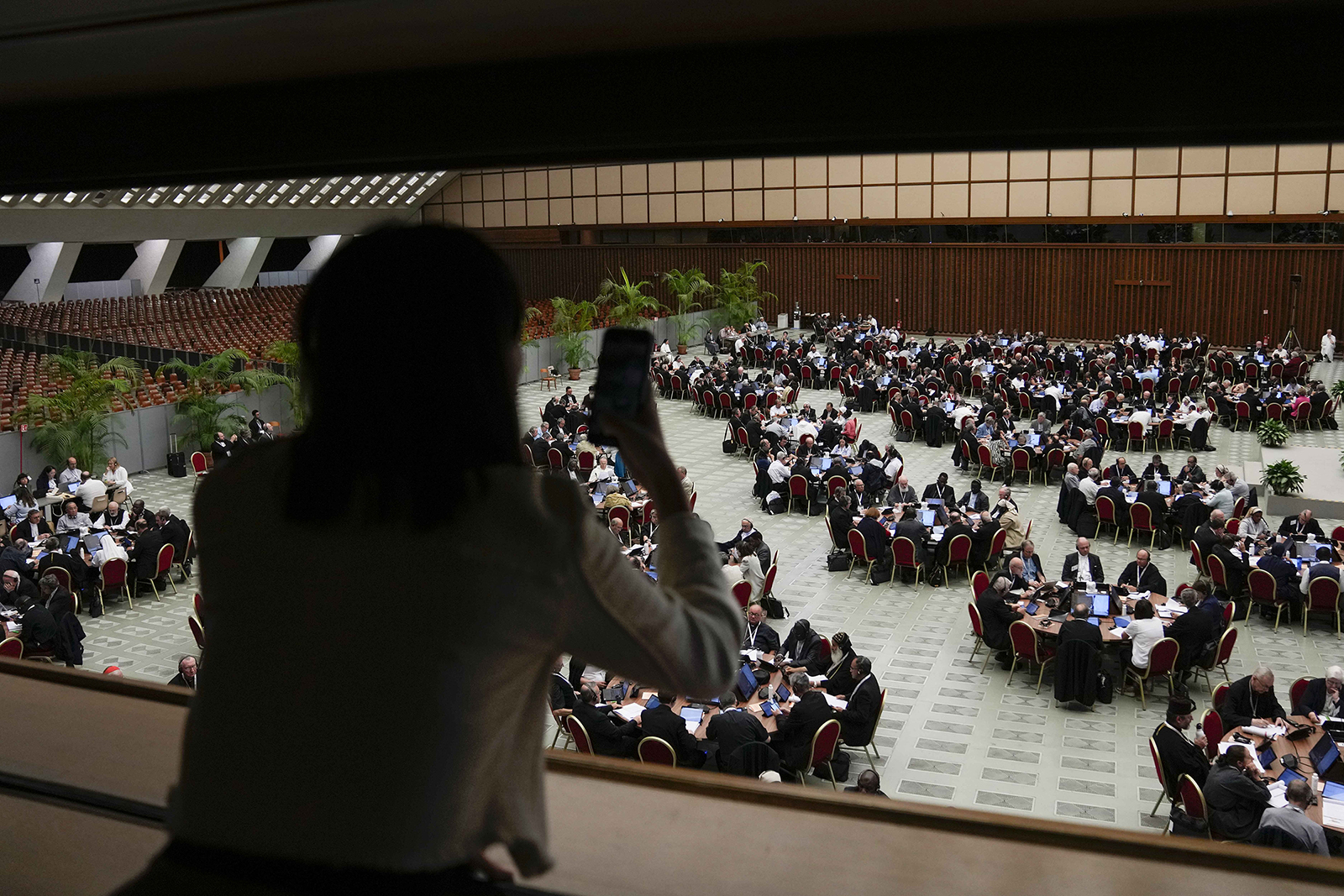
The synod recognized the church’s global infection with narcissistic clericalism. It said fine things about women in leadership and the care of other marginalized people. Yet the synod remains a secret in many places. Its good words don’t reach the people in the pews.
Ask about synodality in any parish, and you might hear “Oh, we don’t do that here.” You are equally likely to hear “When I” sermons (“When I was in seminary,” “When I was in another parish”), and not about the Gospel.
Folks who were excited by Francis’ openness and pastoral message just shake their heads.
The women who want to contribute, who want to belong, are more than dispirited. They have had it. And they are no longer walking toward the door — they are running, bringing their husbands, children and checkbooks with them.
In the Diocese of Brooklyn, it was recently discovered that Mass attendance had dropped 40% since 2017. It is the same in too many places. The reason the church is wobbling is not a lack of piety. It is because women are ignored. Their complaints only reach as far as the storied circular file.
What do women complain about? Bad sermons, as discussed. Autocratic pastors. And the big one: pederasty. If truth be told, women do not trust unmarried men with their children. Worldwide, in diocese after diocese, new revelations continue. Still.
Many bishops and pastors understand this. Francis certainly does, but he is constrained by clerics who dig their heels into a past many of them never knew. More and more young (and older) priests pine for the 1950s, when priests wore lace and women knew their place. That imagining does not include synodality.
Will the synod effort work? Francis’ opening to women in church management is promising. Where women are in the chancery, there is more opportunity for women’s voices to be heard. No doubt, a few more women there could help.
Getting women into the sacristy is trickier.
While it seems most synod members agreed about restoring women to the ordained diaconate as a recognition of the baptismal equality of all, some stalwarts argued it was against Tradition. Still others saw the specter of a “Western gender ideology” seeking to confuse the roles of men and women.
So, they asked for a review of the research. Again.
Women know the obvious: Women were ordained as deacons. There will never be complete agreement on the facts of history, anthropology and theology. Women have said this over and over.
If there is absolute evidence that women cannot be restored to the ordained diaconate, it should be presented, and a decision made.
The women have finished speaking about it.
Complete Article ↪HERE↩!
Church of England backs plans for trial blessings of same-sex weddings
— General Synod’s narrow vote in favour means services to celebrate gay marriages could be held within weeks
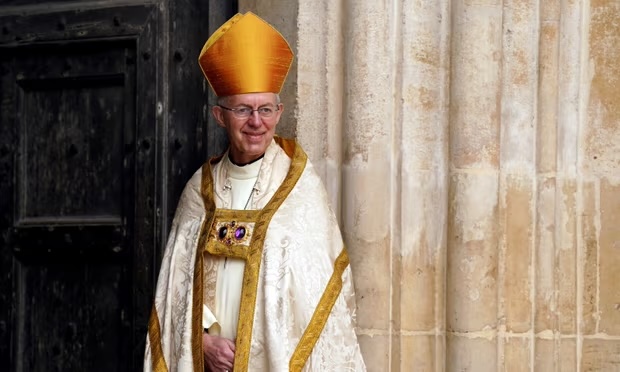
Dedicated church services to bless the weddings of same-sex couples could be held within weeks, after a narrow vote at the Church of England ruling body.
The General Synod backed a plan to hold standalone services of blessings for same-sex couples on a trial basis.
It means that gay Christians will be able to invite family and friends to a special service, which could be held on Saturdays, to bless and celebrate their weddings. Music, readings, confetti and other features would mean such services could look very similar to a standard church wedding.
The proposal for standalone services on a trial basis came in an amendment to a motion that noted progress made by bishops on the divisive issues of sexuality, known within the C of E as Living in Love and Faith. The amendment scraped through by one vote; the amended motion passed by 227 votes to 203.
Steven Croft, the bishop of Oxford, who proposed the amendment, said the “experimental” standalone services would be voluntary and no member of the clergy would be obliged to offer such services.
Last month, bishops agreed to commend special prayers of blessing for same-sex couples for use in existing church services. These are likely to begin before Christmas.
Bishops also agreed last month to begin a two-year process of authorising special standalone services under canon law.
The proposal for trial standalone services means they can begin at the same time as the process of permanent authorisation is under way.
In a joint statement, Justin Welby, the archbishop of Canterbury, and Stephen Cottrell, the archbishop of York – who backed the amendment, said: “We have heard loud and clear, through an extensive debate over two days, the depth of feeling across the church on these hugely important questions.
“While this motion was passed, narrowly, we do not underestimate the depth of feeling and will reflect on all that we have heard as we seek to move forward together.”
Sarah Mullally, the bishop of London and co-chair of the Living in Love and Faith steering group, said: “The truth is – and as we have seen again today – that the Church of England is not of one mind on questions of sexuality and marriage.”
Bishops would now “consider how best to implement” the synod’s decision, she added.
Jayne Ozanne, a campaigner for equal marriage within the C of E, said the decision offered “tiny scraps of hope to LGBT+ people”.
She added: “The C of E remains deeply homophobic, whatever bishops and archbishops may say. I fear that much of the nation will judge the C of E as being abusive, hypocritical and unloving – they are, sadly, correct.”
Daniel Matovu, a barrister and a lay member of the synod, told members that the proposal was “contrary to and wholly inconsistent with God’s word”. He said the Bible made it clear that a male who sleeps with another male cannot enter the kingdom of heaven.
The synod voted against a series of amendments seen by pro-LGBTQ+ campaigners as seeking further delay on the C of E’s glacial moves towards marriage equality. The church has been trying to avoid a split between progressives and traditionalists on the issues for more than 20 years.
Complete Article ↪HERE↩!
Citing spirit of synodality, German bishops say it’s full speed ahead for same-sex blessings

The first Catholic bishop in Germany has called on his priests and pastoral staff to hold blessing ceremonies for same-sex and remarried couples. The West German Diocese of Speyer announced on Friday that these were “blessing celebrations for people who love each other.” Against… pic.twitter.com/Ct40oJFlfc
— KNA (@KNA_Newsroom) November 3, 2023
In the Sermon on the Mount, Jesus proclaimed, “Judge not, lest you be judged.”
Early in his papacy, Pope Francis told journalists: ” “If someone is gay and he searches for the Lord and has good will, who am I to judge?”
Citing those words, while expressing hope for future Synod on Synodality developments, a German bishop has officially asked his clergy to start performing rites blessing Catholics in same-sex relationships. He also included couples with secular divorces, as opposed to church annulments, who are then married outside the church.
“Both with regard to believers whose marriages have broken down and who have remarried, and especially with regard to same-sex oriented people, it is urgently time – especially against the background of a long history of deep hurt – for a different perspective,” wrote Bishop Karl-Heinz Wiesemann of the Diocese of Speyer (.pdf here), in a translation from the German posted by the Catholic Conclave weblog.< The goal, he added, is "a pastoral attitude … as many of you have been practicing for a long time. That's why I campaigned for a reassessment of homosexuality in church teaching in the Synodal Path and also voted for the possibility of blessing ceremonies for same-sex couples. I stand by that." The bishop stressed that new rites will not be "celebrating a sacrament, but rather about a blessing." This change in diocesan policy means that "no one who carries out such blessings has to fear sanctions." Performing these blessings will require "empathy and discretion," wrote Wiesemann. "It may be that the domestic setting (possibly also with the blessing of the shared apartment) is more suitable. … A blessing ceremony can also take place in the church," noted the bishop. "The celebration must differ in words and symbols from a church wedding and, as an act of blessing, should expressly reinforce the love, commitment and mutual responsibility that exists in the couple's relationship." At the end of recent Vatican meetings, Synod on Synodality participants released a 40-page report that didn't mention changes on hot-button topics such as married priests, the ordination of women as deacons and a range of LGBTQ+ issues. However, Bishop George Bätzing, president of the German bishops, noted signs of possible shifts in future synod sessions — even on "gender identity or sexual orientation" disputes that "raise new questions."
The head of Germany’s bishops, Bishop Georg Bätzing, said Sunday that the Synod on Synodality’s final text “is a big step for the universal Church” and that the wish of the synod to revise Catholic sexual ethics is an “enormous step forward.” He contended that an overwhelming… pic.twitter.com/kvCSJcOZUt
— Edward Pentin (@EdwardPentin) October 29, 2023
The global synod statement added: “Sometimes existing anthropological categories are not sufficient to grasp the complexity of what emerges from experience or from science, and therefore this calls for further investigation. We must take the necessary time for this reflection and devote the best of our energies to it, and not fall into simplistic judgments that hurt people or damage the body of the Church.”
Before this synod meeting, Pope Francis urged “pastoral charity” when considering same-sex blessings, adding that the “defense of objective truth” in ancient doctrines is not enough. “For this reason, pastoral prudence must adequately discern whether there are forms of blessing … that do not transmit a mistaken conception of marriage,” he wrote.
Now, Pope Francis has issued an apostolic letter – “Ad theologiam promovendam (to promote theology)” – seeking a “paradigm shift” to a “fundamentally contextual theology” that doesn’t settle for “abstractly re-proposing formulas and schemes from the past.”
This post-synod letter proclaimed: “Theology can only develop in a culture of dialogue and encounter between different traditions and different knowledge, between different Christian confessions and different religions, openly engaging with everyone, believers and nonbelievers.”
OCT 21 #Synod briefing: German Bishop Overbeck says: “We put Jesus Christ at the center of faith in a common quest without clinging to habits & traditionalisms which, if critically examined, have no priority in the hierarchy of truth, & this in the end is important to say.”👇1/4 pic.twitter.com/7HptSttJAU
— Diane Montagna (@dianemontagna) October 21, 2023
Bishops in Germany and other rapidly shrinking European churches have, in recent years, openly pushed for the modernization of Catholic doctrines on sexuality. Last year, bishops in Belgium approved a text allowing rites blessing same-sex couples. And 93% of participants in German sessions preparing for the Vatican synod backed a document (.pdf here) approving “blessing celebrations for people who love each other.”
During a synod press conference, Bishop Franz-Josef Overbeck of Essen – a diocese with 321 parishes in 2002, but only 40 parishes in 2022 – said that if church “theology, the magisterium, or tradition” continues to ignore the “signs of the times,” modern Germans will stop listening, including young Catholics.
Asked to clarify, Overbeck added: “We put Jesus Christ at the center of faith in a common quest without clinging to habits and traditionalisms which, if critically examined, have no priority in the hierarchy of truth.”
Complete Article ↪HERE↩!
It’s time to let women be priests
— The Roman Catholic Church needs to reevaluate its stance on female ordination.
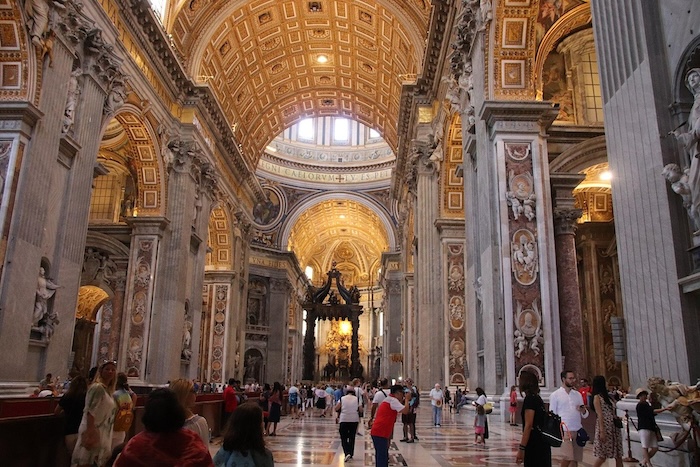
Dressed in purple and wielding lavender banners, dozens of women took to the cobblestone paths lining the Vatican to advocate for female ordination this past October. The organizing group — Women’s Ordination Conference — has become one of the largest organizations calling for the ordination of women and gender equality within the Roman Catholic Church. The WOC’s recent march took place during the Vatican’s Synod on Synodality, a month-long summit where members of the Catholic Church gather to discuss concerns facing the Church. Amongst the issues addressed, women’s role in the church emerged as one of the most contentious topics.
Female ordination has been banned within the Roman Catholic Church for centuries. The 1994 apostolic letter issued by Pope John Paul II further cemented the Church’s strong opposition to women joining the priesthood. Still, the topic has continued to be one of the most criticized stances taken by the Church. Although Pope Francis expressed that there is no “clear and authoritative doctrine” regarding the ordination of women, some members of the Church feel differently.
Proponents of female ordination often assert the fact that all 12 of Jesus’s Apostles were men as justification for prohibiting women from being ordained. Indeed, Jesus and his apostles were men, but this logic seems to blatantly ignore the fact that women also held leadership roles in early Christianity. In Colossians 4:15, Nympha is described as hosting a church in her home, similar to Apphia in Philemon 2. And in Romans 16:1, Paul commends Phoebe for being a deacon of the church in Cenchreae. To assert that women are unqualified to preach solely because of their gender is a myopic reading of the Bible that silences the stories of female biblical figures. Archival evidence further shows that women served as priests and even bishops from the second to sixth centuries, affirming their experience as preachers.
Still, picturing a woman dressed in an alb and chasuble can be difficult for some to imagine. One participant at the recent Synod explained he felt “violated” by the concept of female priests. The current sentiment regarding female ordination is partly attributed to the Church’s view on gender roles: that there is a clear distinction between men and women. Yet using this as reasoning to prevent female ordination is hypocritical. Under Gaudium et spes, discrimination, including gender discrimination, is called to be eliminated. Preventing women from being ordained because of their gender contradicts the Church’s own teaching.
Certain Catholic women have sought to pursue their dreams of priestly vocations despite the current policies in place. The Roman Catholic woman priest movement, consisting of over 200 women globally, takes part in unauthorized ordination practices to help women become priests. But it comes at significant risk: Women who become ordained can face hostility and be punished with excommunication from the Church.
The Catholic Church should look to embrace female ordination as opposed to fearing it. From a pragmatic standpoint, allowing women to be ordained could help remedy the ongoing priest shortage in the U.S. by filling vacant roles. It has also been consistently proven that having women in leadership roles helps to improve fairness and increase collaboration. As nuns, American women have shown great involvement in forwarding social justice initiatives too. Given that as of 2015, 59% of Catholic Americans believed that women should be allowed to be ordained, there is evident support behind this movement. While the Catholic Church has remained relatively fixed in its stance on female ordination, women in general have seen tremendous strides in autonomy within the past few centuries, from gaining voting rights to serving as CEOs in the workforce. But it’s time for the Catholic Church, an institution grounded in the belief of solidarity, to start demonstrating that virtue toward women.
Complete Article ↪HERE↩!

